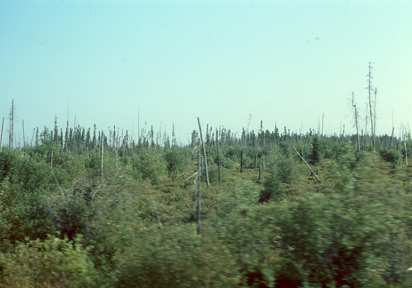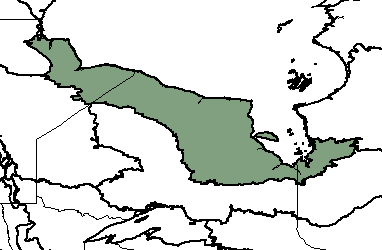
black spruce and tamarack, near James Bay, Ontario (c) 2005 Scott and Ruth Bassett
Bioimages home (click on an image to enlarge)
view
this page in its intended navigation context
Southern Hudson Bay taiga
(WWF
ecoregion NA0616)

black spruce and tamarack, near James Bay,
Ontario
(c)
2005 Scott and
Ruth Bassett

Source of bioregions data:
Olson, D. M. and
E. Dinerstein. The Global 200: Priority ecoregions for global conservation. (PDF
file) Annals of the Missouri Botanical Garden 89:125-126.
Distinctiveness (1=highest,4=lowest): 3 (bioregionally
outstanding)
This ecoregion contains some of the most extensive wetlands in the North
American boreal forest. These support huge breeding colonies of waterfowl
and support migrating birds. The ecoregion also supports the world's
southernmost polar bear populations.*
Conservation Status (1=most endangered, 5=most
intact): 5 (relatively intact)
99% of the ecoregion is intact.
There is little fragmentation.*
 Picea mariana (black spruce)
(c) 2004 Maurice J. Kaufmann
Picea mariana (black spruce)
(c) 2004 Maurice J. KaufmannSome views from the ecoregion
James Bay region, Ontario

boreal forest
(c)
2005 Scott and
Ruth Bassett
hires

Moose River
(c)
2005 Scott and
Ruth Bassett
hires

aerial view
(c)
2005 Scott and
Ruth Bassett
hires
* Ricketts, T.H., E. Dinerstein, D.M. Olson, C.J. Loucks, et al. (1999) Terrestrial Ecoregions of North America: A Conservation Assessment. World Wildlife Fund - United States and Canada. Island Press, Washington, D.C. pp. 337-340.
Except as noted, images copyright 2002-2004 Steve Baskauf - Terms of use